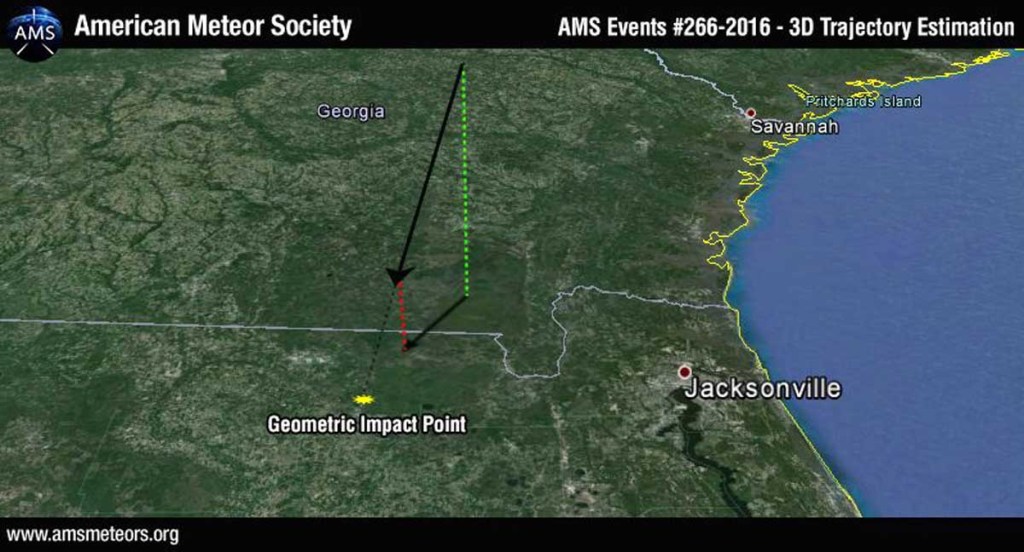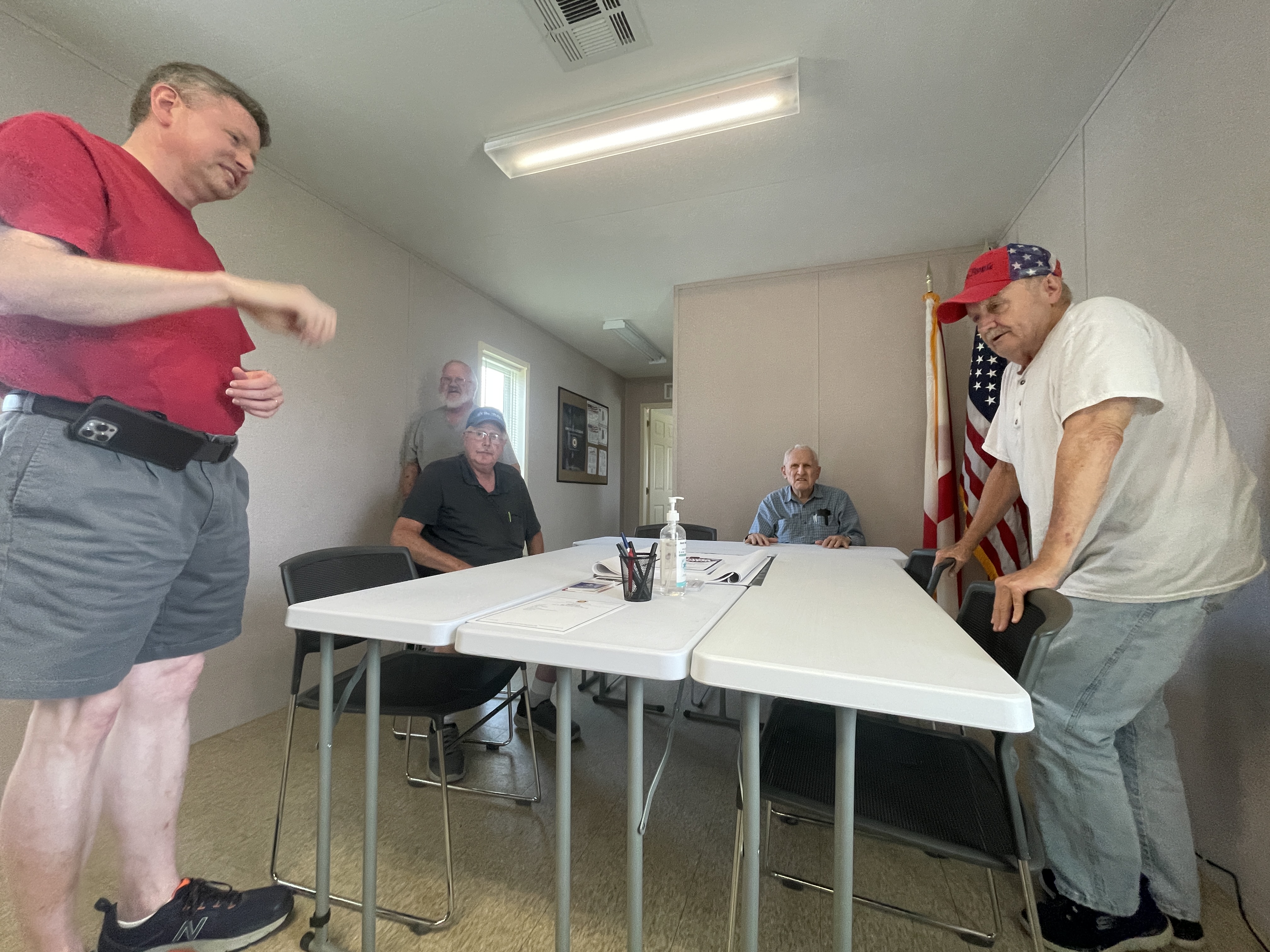Meteorite fireball burns through South Georgia, Florida skies
Published 12:45 pm Tuesday, January 26, 2016

- Above is a 3D trajectory of the fireball’s entry plotted by the AMS using data from the witness sightings. The geometric impact point is located few miles north of Lake City, Florida.
VALDOSTA, Ga. — Dozens of spotters sighted a fireball burning its way through the skies of South Georgia and North Florida Sunday, and an area astronomer said it might have been a meteorite making landfall in the region.
More than 100 reports of an “extremely bright daytime fireball” around 10:25 a.m. had been submitted to the American Meteor Society, according to the group’s website. Most of the sightings were to the east and southeast of Valdosta, though some sightings were made in the Tallahassee, Florida area to Valdosta’s west, according to a map on the group’s website.
Dr. Martha Leake of the physics, astronomy and geosciences department at Valdosta State University said she was alerted to the fireball by Dr. William Cooke, a VSU graduate and head of the NASA Meteoroid Environment Office at Marshall Space Flight Center in Alabama.
“Apparently, Doppler weather radar tracked it down to an altitude of a mile,” she said, indicating “significant material on the ground.” Leake said the lack of sightings in and around Valdosta might have been due to the position of the sun at the time.
The potential impact area would be south of Fargo in Clinch County, Georgia, and northeast of White Springs, Florida, Leake said.
“I suspect some of it wound up in the (Okefenokee) swamp or on farmland south of the swamp,” she said.
American Meteor Society maps suggest an impact east of US 441 north of Lake City, Florida.
The fireball was apparently a “meteorite fall,” according to the society’s clarification. A meteor is a stony or metallic chunk of debris falling through Earth’s atmosphere; it takes on the name “meteorite” if it hits the ground.
Leake said meteorites fall into three general categories: Iron meteorites, more common stony meteorites and meteorites composed of both stone and iron.
“Mostly likely (Sunday’s fireball) was a stony meteorite, which would look like any other rock,” except for being dark on the outside due to heat friction from falling through the atmosphere, she said.
Though falling space debris is reported daily, a daytime fireball is “pretty extraordinary,” Leake said.
Mike Hankey, a spokesman for the meteor society, suggested people in the area check security cameras to see if they caught images of the fireball.
Sunday’s sighting isn’t the area’s first on record. On April 29, 2011, several reports of a fireball in the sky over Lowndes County led to speculation that a meteor or other space debris may have been spotted.
Richards writes for The Valdosta, Georgia Daily Times.





